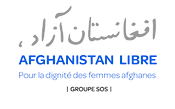
AFGHANISTAN
Plagued by decades of violent conflict, Afghanistan is the least peaceful country in the world and the most dangerous country in the world for women.
Afghanistan has been devastated by more than four decades of conflict that have claimed hundreds of thousands of civilian lives and forced millions more to flee from their homes, creating one of the largest refugee populations in the world. The political instability that followed the Soviet occupation in the late 1970s triggered a movement of radical religious extremism and the birth of the Taliban regime, which controlled 90 percent of the country from 1996 to 2001. Under this regime, millions of civilians were subjected to gross human rights violations including extrajudicial killings, torture and arbitrary detention. In addition, drought, natural disaster and economic chaos have made Afghanistan one of the poorest and most unstable nations in the world.
2021 brought the return of the Taliban regime to power. The year began with increasing conflict in Afghanistan’s rural provinces, resulting in thousands of civilian casualties and causing hundreds of thousands of people to flee their homes. After only a couple of months, the Taliban launched a lightning offensive that took district after district, until closing in on the capital. August 15th, Kabul fell to the regime. Today, the context has drastically changed. The basic rights and freedoms of the Afghan people, and especially women, are already being violated and widespread economic, social, and political chaos is unfolding. The humanitarian crisis is estimated to push 97% of the population below the poverty line before the year ends. At the beginning of 2021, an estimated 18.4 million people were in need of immediate humanitarian assistance, nearly 10 million more people than estimated in 2020.

35,7 M
18,4 M
are in need of urgent humanitarian assistance
500 000
internally displaced persons, 80% of whom are women and children
citizens
THE WAR AGAINST WOMEN
Afghanistan is largely considered the worst country in the world for women. 90 percent of Afghan women are estimated to experience some form of gender-based violence, including physical, sexual, and psychological violence, in their lifetimes.
Violence against women is widespread in Afghanistan and worsens in rural areas, where approximately 75 percent of the female population resides and where socioeconomic and rights gains have not equally taken space in the last 20 years. These same spaces have known the deadliest and most violent conflict, the homes of countless Afghan civilians the sites of war crimes. The ICRC estimates that 85 percent of civilians live in an area where fighting has occurred, 32 percent of civilians have been injured due to the conflict, 42 percent of civilians have been tortured, and an estimated 48,000 civilians are estimated to have lost their lives due to conflict since the fall of the Taliban regime in 2001 (ICRC). These statistics have worsened since the Taliban’s offensive leading to their control of the country following the announcement of the withdrawal of Western forces. 2020 marked the highest number of women killed in a single year since the United Nations Assistance Mission in Afghanistan began tracking civilian casualties.
The conflict has played a central role in the position of women in Afghan society and has deeply accentuated gender-attitudes and practices and distorted progress for women’s and girls’ rights in both formal and informal spheres. Harmful traditional practices such as early and forced marriage, baad, honor killings, and imprisonment for “moral crimes” are widespread and commonly practiced in rural and conservative areas across the country.
Since August 15, 2021, the Taliban have regained power and are reinstating their former regime of oppression. In spite of their promises and rhetoric aimed at reassuring the international community that they will respect women’s and girls’ rights, the facts illustrate a contradictory reality: girls are still not allowed to go to middle, high school , or public University.
The school curriculum will be changed in the first weeks of the Taliban government in order to introduce their own interpretation of Islam through Sharia law. Four out of five women are unable to go to their workplaces. Afghan women must wear a veil and be accompanied by a male relative when leaving the home.
The return of the Taliban is already beginning to roll back women’s fragile gains fought for these past twenty years. When the international community looks away from the situation in Afghanistan, the Taliban will show their true intentions. Afghanistan Libre will not abandon Afghan women and girls.
of women experience some form of psychological, physical or sexual abuse in their lifetimes
On average, 75% of marriages are forced, often before the age of 16
Women have a 1 in 52 chance of dying from largely preventable pregnancy-related causes



